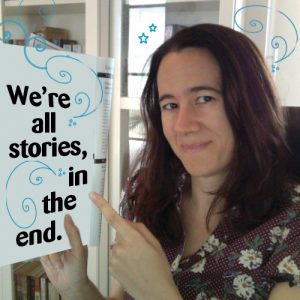Of all the questions I ask my creative writing clients and students when mentoring and editing, this is the question I ask them the most.
It generally has two manifestations, which I thought I’d share as insight into the storytelling process.
1. Studying Other Writers
When reading and studying other writers, I’ll often point out a writing technique being used and ask my client/student why the writer put it there. My aim is to give them an opportunity to devise the resulting affect, appreciate the thought that went into creating it, then see how they might apply that to their own stories. However, it’s rarely that easy:
“So why do you think they put that there?” I’ll ask them.
“I don’t know…” They often pause to think. “To be interesting?”
“Hm, not quite. Can you guess again?”
“Um, to make the writing more interesting.”
At which point I’ll identity a more specific effect or two, along with the knock-on effect on the rest of the story, and my client/student will quickly develop their appreciation. Sometimes, however, I’ll also go on to explain the real-life creative writing process to them, and I’m always surprised when they don’t realise the effort involved, or the length of the journey to publication.
The creative writing process often looks a little like this:
| Writer | Write first draft |
| Rethink | |
| Write second draft | |
| Rethink | |
| Write third draft | |
| Put draft aside for a while | |
| Write fourth draft | |
| Initial Readers | Send out to first reader(s) |
| Write fifth draft | |
| Send out to beta reader(s) | |
| Write sixth draft | |
| Editor + Proofreader | Structural edit |
| Write seventh draft | |
| Copy edit | |
| Write eighth draft | |
| Proofread | |
| Write ninth draft | |
| Layout | Send to layout |
| Check layout | |
| Sent to print |
For this reason, writers rarely do anything just to be ‘interesting’. Every sentence has to be considered and rethought, every paragraph, every scene, and certainly every technique. This is why studying others’ creative writing and being aware of the creative process can be useful – it’s not just a writer communicating ‘something interesting’ to you, it’s an entire team of people telling you a story.
2. Assessing Own Work
When reading and assessing my client’s or student’s own creative work, I’ll often point to sentence, paragraph or scene, and ask them why they put it there. My hope is that they’ll be able to justify their creative decision, and perhaps reflect on the consequences for the story. However, it’s rarely that easy:
“So why did you put that there?” I’ll ask them.
“Because…” They often pause to think. “That’s what happens next.”
“Hm, but does it move the ‘story’ itself along, show your character or their world developing, or offer the reader a fitting moment of introspection?”
“Um, maybe not.”
At which point I’ll give them some advice a literary agent once told me: ‘use it or lose it’ (thanks Cameron McClure!). Every word in a story has to work for its place on the page. If it’s not doing a job, it’s probably unnecessary and should be cut.
It can be hard to do this as a writer, as we tend to like words! There’s nothing like weaving a wondrous whorl of words to whirl your reader with delicious enchantment. I call this our ‘secret poet’. But there is something more important to a writer than words – and that’s story.
Writers can become attached to words, we can even be proud of them; but as Sir Arthur Quiller-Couch wrote in his 1916 book ‘On the Art of Writing’, later reiterated by Stephen King in his book ‘On Writing’, we must sometimes ‘murder our darlings’ for the sake of our story.
Story must come first, because that’s what we’re trying to communicate to the reader. We’re trying to create an emotional connection, offer readers a deeper understanding of human experiences, show them how to make sense of others and ourselves. Stories can inspire us or warn us about what to do and who to be. Stories can create empathy, fear, hope or laughter. Stories are the best invention ever created!!
So, if I have to cut a sentence, paragraph, scene or chapter to make my story better – I’m in. I create a document called ‘Rejects’ and I copy and paste my deletions into it, because the creator in me hopes I might re-use them one day, either in a future draft of the same work, or in a new work.
As you can imagine, I have many ‘Reject’ documents on my computer, all with fabulous words waiting to be re-used – although, to date, I don’t think I ever have.







Thank you Zena. Enlightening (literally😂)
I’m so glad you enjoyed it, and took the time to stop by and say so. Thanks, Anne! :0)